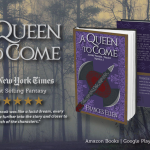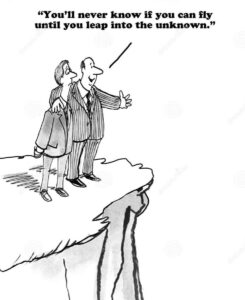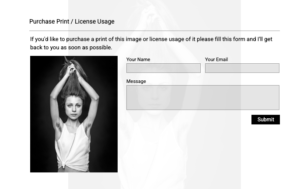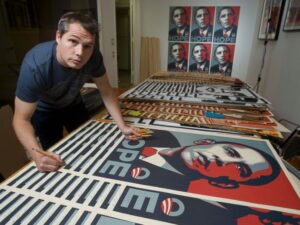I could not find the AIGA Readings on Ethics and Copyright guide, and the link led to AIGA Resources instead. So I searched on the website and found this video titled, “Copyright Law for Graphic Design by Linda Joy Kattwinkel & Shel Perkins.” I read the excerpt and watch the video.
I learned a few things about copyright that I did not realize in these articles. Many of these things I wish I knew before handling a situation I had with a previous client involving copyright. For the most part, it wasn’t discussed or explained to them well enough due in part to my mentor. He was supposed to guide me through this process and they were the ones who did not take the project seriously enough. I knew nothing about copyright and my mentor was supposed to take care of that, but instead, I taught myself. I had to research it all and get a contract made up myself to sign over the rights to the design. It was very frustrating, to say the least.
Some of the few things in particular from the articles I read that I found interesting or useful are as listed:
- “You get copyright by default,” which is something I knew but I did not know that copyright does not require any action to have one for your own personal work.
- “When reusing images, you can’t trick copyright,” which kind of concerns me, mostly because I’m still a student I suppose, and getting an image that I need for a campaign or design is hard enough. Many of the images you might need are usually watermarked and you have to buy them, even for personal use, which is annoying. I have to say for these photos, I try to salvage them if they are high enough quality. I will use it anyway since it’s not like I’m making money on it. I know this is still questionable since I am not using it the way the author allows, but I try to design it in a way that can seem different enough from the original. But usually, pictures are never an issue for me since most of my designs are illustrated and use free-use mockups. Many assets I find and fonts are free so I am not infringing any copyright.
- “Your client expects you to educate them,” wish I knew this before, but it wasn’t entirely my fault either, so I took this as a learning experience. But this portion goes into how to maintain this relationship more and when to talk to them about this.
- “If you get copied, you have leverage,” which I knew, but I did not realize that most companies will not fight you in court if you say to not use your content. That you usually don’t need a lawyer either because this is a situation best avoided. This makes me feel more relieved about this possibly happening in the future.
During the creation of my senior project, I had to search all over the internet for images I could use for my concepts. I was hoping I could go down a more illustrated but this was not how my concepts would be best presented. I had to find unusual and very artistic images, some pulled straight from the photographer’s websites. These images make me nervous about my project because I know it is not right to use these images without permission, but I did not have time to contact the photographers at the time. I will contact them once I am done with this semester and ask them if I can use their photos and post them to my portfolio with their credit or if I will have to buy rights for use. I do not plan to display the designs with their photos otherwise. I have many images that are free for personal and even commercial use thankfully so this won’t be too big of a blow to my project presentation if I am denied.
The Fairey Copyright “Hope” poster vs. Associated Press imagery lawsuit is an interesting one. I thought it was crazy how he was sentenced to 2 years probation and a 25k fine. But it seems because he tampered with the documents proving that he did use the image owned by the Associated Press, he was fined accordingly once discovered. It put a damper on the point that Fairey was trying to make which was, “the ability of artists everywhere to be inspired and freely create art without reprisal.” He said that at first, he believed he did not get the image from the Associated Press but later found he was mistaken, but out of fear and embarrassment he destroyed the documents, obviously a bad move. If he had just been honest from that point on, I feel his original intent, in this case, could have been explored instead of settling after making himself look so bad. It would have been interesting to see such a challenge to copyright laws, it might have even changed the law, who knows.








